10 Great Cities for College Grads
Cramming for final exams is over and you've got your degree.


Cramming for final exams is over and you've got your degree. Now the real test begins. As graduates prepare to enter the workforce, they'll find the best job market in the last five years, according to career experts. The bad news: average starting salaries for new grads have dropped below $30,000 during the same time frame.
Here are ten U.S. cities that may offer exceptional opportunities for recent grads in a rebounding economy.
We began our search using the same criteria we applied to select our list of Best Cities for the Next Decade: healthy economies fueling new job growth. We then refined our search by looking at factors of interest to the post-grad set, such as rent affordability, access to public transportation, overall cost of living, culture, nightlife and the percentage of people ages 20 to 24.
Take a look. And let us know what you think with a reader comment.
The unemployment rate data listed is from the Bureau of Labor Statistics as of March 2011. It is preliminary and has yet to be seasonally adjusted.

New York, N.Y.
Median monthly rent: $1,072 (nat. average, $817)
Median income (2009): $34,039 (nat. average, $30,402)
Income growth (2005 to 2009): 4.6%
Unemployment rate: 8.4% (nat. average, 9.2%)
Percentage of residents ages 20-24: 6.2% (nat. average, 7.0%)
Let's start at the top. No U.S. city can match the Big Apple in terms of job opportunities or cultural fare. Yes, it can be ridiculously expensive, especially for those on a starting salary. But with a little digging, you can find cheaper rents in outer-borough neighborhoods--Bay Ridge in Brooklyn, Sunnyside and Jackson Heights in Queens--or across the Hudson River in Hoboken, New Jersey. An extensive public transit system makes getting around a snap. And it's the city that never sleeps. No wonder droves of recent grads seek their fortunes here each year.
Pros: Unmatched career opportunities, culture and nightlife, falling crime rates
Cons: Sky-high rents and cost of living in most areas
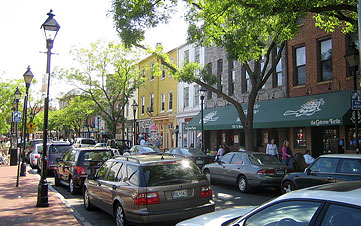
Charlotte, N.C.
Median monthly rent: $774 (nat. average, $817)
Median income (2009): $28,386 (nat. average, $30,402)
Income growth (2005 to 2009): 4.39%
Unemployment rate: 10.4% (nat. average, 9.2%)
Percentage of residents ages 20-24: 6.1% (nat. average, 7.0%)
With a metro population of 1,745,524, Charlotte is the second-largest banking center in the country, and it has the jobs to prove it: Wells Fargo (WFC) and Bank of America (BAC) rank among the city's top employers. Charlotte's diversified economy has also seen gains in fields such as aviation, defense, bioscience and energy production, and the city added 4,900 private-sector jobs last year alone. US Airways Group (LCC) has its headquarters here. Low rents and living costs combined with a glitzy, developing uptown district make it worth a look.
Pros: A cost-of-living bargain compared to other major cities, rebounding economy.
Cons: High, but falling, crime rates, limited public transportation

Baltimore, Md.
Median monthly rent: $972 (nat. average, $817)
Median income (2009): $32,994 (nat. average, $30,402)
Income growth (2005 to 2009): 5.6%
Unemployment rate: 7.4% (nat. average, 9.2%)
Percentage of residents ages 20-24: 6.8% (nat. average, 7.0%)
Baltimore's diversified economy includes high-paying jobs in defense, finance and information technology. It's home to Constellation Energy Group (CEG), a Fortune 500 company. Lockheed Martin Corporation (LMT) and Grant Thornton International also have offices here.
Charm City weathered the recession with low foreclosure rates, and income growth remains strong. Downtown Baltimore is in the midst of several multimillion-dollar development projects. It ranks higher than Austin, Denver and Atlanta in per capita income for downtown residents. And as many music fans know, few cities can match Baltimore for its innovative, eclectic art and music scene.
Pros: Relatively low costs of living and rent compared to other major cities, strong income growth, waterfront and downtown districts, extensive bus and subway system, easy train commute to Washington, D.C., violent crime dropped 4% between 2009 and 2010.
Cons: Long average commutes from the suburbs. Despite a drop in crime rate, some of Baltimore's inner-city neighborhoods still struggle with serious crime.

Colorado Springs, Colo.
Median monthly rent: $802 (nat. average, $817)
Median income (2009): $26,977 (nat. average, $30,402)
Income growth (2005 to 2009): 3.4%
Unemployment rate: 10.1% (nat. average, 9.2%)
Percentage of residents ages 20-24: 7.9% (nat. average, 7.0%)
Located 60 miles south of Denver, Colorado Springs has the lowest metro population on our list at 608,000. But the city offers an unbeatable combo for recent grads: A vibrant, tech-based economy plus rock-bottom living costs. In 2010,the city made plans to add 1,398 new jobs in fields like information technology, banking and higher education, with average salaries around $36,900. Major companies like Hewlett-Packard (HPQ), Verizon Communications (VZ) and FedEx (FDX) have corporate offices here.
Rents remain low -- even downtown, with plenty to do in a walkable, nine-block radius. And with the Rocky Mountains looming over the city, it's an outdoor enthusiast's delight, ranking among the country's fittest cities, according to a recent Gallup survey. It's home to Colorado College, the Air Force Academy, and many evangelical Christian organizations.
Pros: Educated community, low crime rate, 118 miles of urban bike trails, high percentage of residents ages 20-24 compared with other cities on our list.
Cons: High unemployment rate for low-skilled workers (opportunities skew toward the highly-skilled), limited public transit, low median income.

Washington, D.C.
Median monthly rent: $1,226 (nat. average, $817)
Median income (2009): $40,952 (nat. average, $30,402)
Income growth (2005 to 2009): 4.9%
Unemployment rate: 9.5% (nat. average, 9.2%)
Percentage of residents ages 20-24: 6.5% (nat. average, 7.0%)
The District is a clear choice for new grads looking to start their careers in public service. The nation’s capital led U.S. job growth in 2010, hiring thousands for stable, well-paying jobs in government and government-related sectors, such as like public health, homeland security and legal services.
By 2012, Uncle Sam will make another 25,000 hires in the region -- paying more, on average, than the private sector. As in other large cities, well-paying jobs come with higher rents and living costs. But recent grads can look to eclectic neighborhoods like Adams-Morgan and Columbia Heights for cheaper rent. An abundance of free museums, concerts and other entertainment also lessens the cost-of-living sting.
Pros: An economy insulated from economic volatility because of so many government and government-related jobs, extensive public transportation system, plenty of excitement, history, and nightlife.
Cons: It's pricey. And commutes can be long.
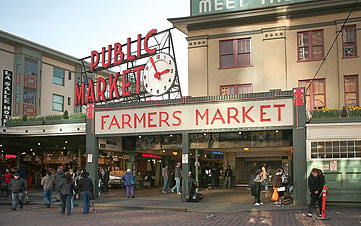
Omaha, Neb.
Median monthly rent: $711 (nat. average, $817)
Median income (2009): $27,075 (nat. average, $30,402)
Income growth (2005 to 2009): 3.5%
Unemployment rate: 5.1% (nat. average, 9.2%)
Percentage of residents ages 20-24: 6.9% (nat. average, 7.0%)
Omaha's metro area population comes in at 829,702. Five Fortune 500 Companies -- Berkshire Hathaway (BRK-A), Union Pacific (UNP), Mutual of Omaha, ConAgra Foods (CAG) and Peter Kiewit Sons -- call Omaha home, and the city offers thousands of high-paying, high-skilled jobs in finance, defense and information technology. Starting salaries go further in the Midwest: Omaha's rock-bottom rents put a two-bedroom apartment within easy reach of most recent grads, and the cost-of-living falls way below that of the other cities on our list. Omaha also offers a surprising mix of culture and nightlife, especially in the trendy Old Market arts district and the dozens of jazz, rock and indie-rock clubs downtown.
Pros: Low unemployment rate, low crime rate, short commutes
Cons: Limited public transit system, low median income overall
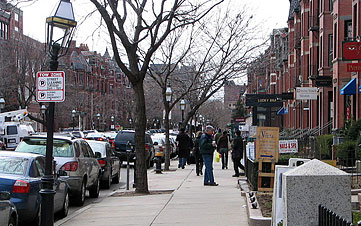
Seattle, Wash.
Median monthly rent: $942 (nat. average, $817)
Median income (2009): $33,372 (nat. average, $30,402)
Income growth (2005 to 2009): 5.0%
Unemployment rate: 9.2% (nat. average, 9.2%)
Percentage of residents ages 20-24: 6.7% (nat. average, 7.0%)
Seattle is a global hub not just for freight, but also for information technology, clean technology and life sciences. Forty-one percent of Seattle's businesses -- most of them mid-sized -- say they plan to add jobs this year, and Amazon recently posted want ads for 1,900 new jobs in its South Lake Union office. A studio in the hip Capitol Hill neighborhood runs well under $1,000. Take your savings to a theater, club or cafe -- the Emerald City is renowned for its music, theater and coffee culture.
Pros: Stable job scene, relatively low crime rate
Cons: Limited public transit, sluggish post-recession recovery. And hope you like cloudy days.
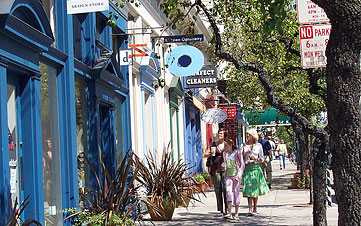
Boston, Mass.
Median monthly rent: $1,112 (nat. average, $817)
Median income (2009): $36,174 (nat. average, $30,402)
Income growth (2005 to 2009): 4.3%
Unemployment rate: 7.1% (nat. average, 9.2%)
Percentage of residents ages 20-24: 6.7% (nat. average, 7.0%)
Sixty colleges and universities, 15 hospitals and 18 Fortune 500 companies call the Boston area home -- including Liberty Mutual, Boston Scientific (BSX) and State Street Corp. (STT). That makes Beantown a promising choice for recent grads seeking careers in science, medicine, finance and academia. It's expensive. Rents skew high here, but so does the income -- and unemployment is impressively low. There's also Fenway Park, the Faneuil Hall marketplace, Cambridge, cheap lobster, and the best pizza outside of New York.
Pros: Educated workforce, diverse nightlife and entertainment, extensive public transit system and renowned walkability, relatively low (and falling) crime rates
Cons: Overall cost of living is high, average commutes are long
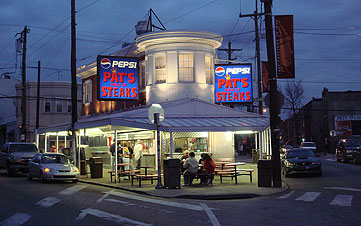
San Francisco, Calif.
Median monthly rent: $1,259 (nat. average, $817)
Median income (2009): $38,448 (nat. average, $30,402)
Income growth (2005 to 2009): 3.9%
Unemployment rate: 10.0% (nat. average, 9.2%)
Percentage of residents ages 20-24: 5.9% (nat. average, 7.0%)
Arguably the tech capital of the world, San Francisco is home to 4,133 information technology firms, 50 digital media companies (including Lucasfilm and Yelp, Inc.) and 30 clean tech firms, according to the San Francisco Center for Economic Development. The city expects to add about 16,000 jobs in the next five years. Again, we know it's an expensive place to live. But the job opportunities are exceptional and could be well worth the cost. Plus, San Francisco offers an exceptional cultural atmosphere and a diverse community in a pleasant, if foggy, climate.
Pros: High starting salaries for skilled workers, relatively low crime rate, an extensive public transit system
Cons: It comes with a high pricetag in rents and living costs

Philadelphia, Pa.
Median monthly rent: $895 (nat. average, $817)
Median income (2009): $30,974 (nat. average, $30,402)
Income growth (2005 to 2009): 4.6%
Unemployment rate: 8.5% (nat. average, 9.2%)
Percentage of residents ages 20-24: 6.5% (nat. average, 7.0%)
The number of college-educated young adults in Philadelphia has jumped 57% from 2000 -- evidence of the city's diverse entry-level job opportunities and relatively low cost. In the past year, Philly added 22,500 jobs in fields such as health and education. The country's fifth largest city also boasts one of the most competitive bioscience and medical technology hubs, which includes companies such as MedImmune and Bio-Rad Laboratories (BIO). Recent grads can live in Old City, Northern Liberties or Fairmount, where a two-bedroom runs a little over $1,000 and galleries, bars and boutiques abound.
Pros: Relatively low rent and cost of living when compared with other major cities, such as New York and Washington, D.C., extensive public transportation system, high job growth in healthcare, science and technology
Cons: Persistent high crime, rents still slightly higher than national average

Profit and prosper with the best of Kiplinger's advice on investing, taxes, retirement, personal finance and much more. Delivered daily. Enter your email in the box and click Sign Me Up.

Browne Taylor joined Kiplinger in 2011 and was a channel editor for Kiplinger.com covering living and family finance topics. She previously worked at the Washington Post as a Web producer in the Style section and prior to that covered the Jobs, Cars and Real Estate sections. She earned a BA in journalism from Howard University in Washington, D.C. She is Director of Member Services, at the National Association of Home Builders.
-
 Stocks Bounce But End With Big Weekly Losses: Stock Market Today
Stocks Bounce But End With Big Weekly Losses: Stock Market TodayThe stock market rout continued on Friday, but a late-day burst of buying power brought the main indexes off their session lows.
-
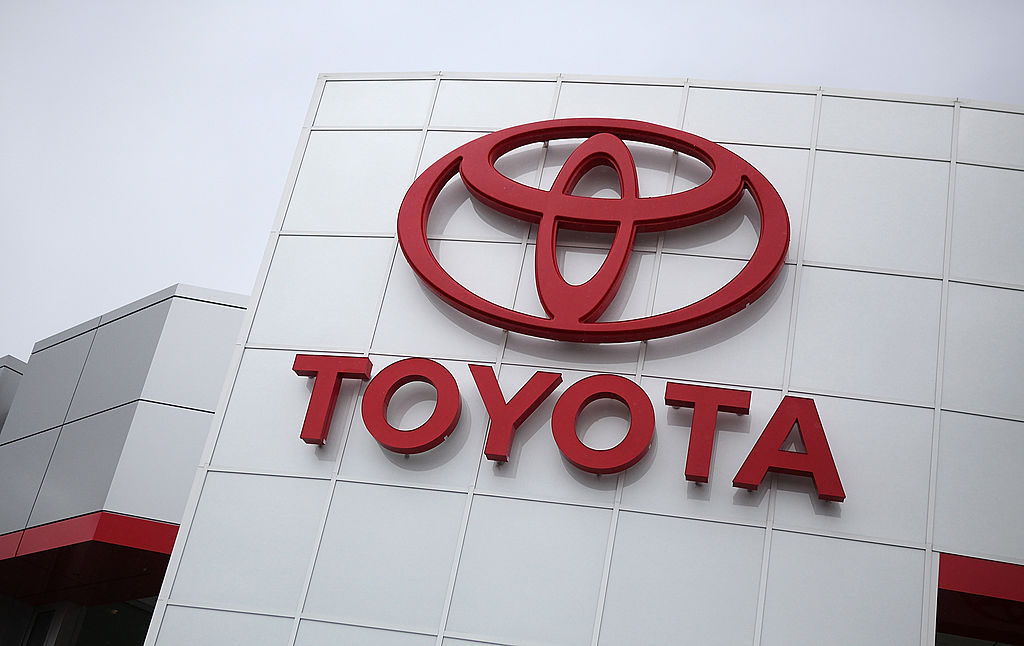 More Than 1 Million Toyota, Lexus and Subaru Vehicles Recalled for Camera Issue. Is Your Vehicle Affected?
More Than 1 Million Toyota, Lexus and Subaru Vehicles Recalled for Camera Issue. Is Your Vehicle Affected?A software glitch in the Panoramic View Monitor system causes blank or frozen rear-camera images, triggering a massive recall of 2022-26 models.
-
 What to Do With Your Tax Refund: 6 Ways to Bring Growth
What to Do With Your Tax Refund: 6 Ways to Bring GrowthUse your 2024 tax refund to boost short-term or long-term financial goals by putting it in one of these six places.
-
 What Does Medicare Not Cover? Eight Things You Should Know
What Does Medicare Not Cover? Eight Things You Should KnowMedicare Part A and Part B leave gaps in your healthcare coverage. But Medicare Advantage has problems, too.
-
 15 Reasons You'll Regret an RV in Retirement
15 Reasons You'll Regret an RV in RetirementMaking Your Money Last Here's why you might regret an RV in retirement. RV-savvy retirees talk about the downsides of spending retirement in a motorhome, travel trailer, fifth wheel, or other recreational vehicle.
-
 The Six Best Places to Retire in New England
The Six Best Places to Retire in New Englandplaces to live Thinking about a move to New England for retirement? Here are the best places to land for quality of life, affordability and other criteria.
-
 The 10 Cheapest Countries to Visit
The 10 Cheapest Countries to VisitWe find the 10 cheapest countries to visit around the world. Forget inflation and set your sights on your next vacation.
-
 15 Ways to Prepare Your Home for Winter
15 Ways to Prepare Your Home for Winterhome There are many ways to prepare your home for winter, which will help keep you safe and warm and save on housing and utility costs.
-
 Six Steps to Get Lower Car Insurance Rates
Six Steps to Get Lower Car Insurance Ratesinsurance Shopping around for auto insurance may not be your idea of fun, but comparing prices for a new policy every few years — or even more often — can pay off big.
-
 How to Increase Credit Scores — Fast
How to Increase Credit Scores — FastHow to increase credit scores quickly, starting with paying down your credit card debt.
